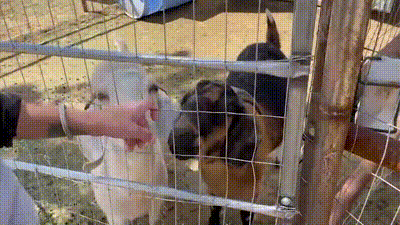
So you've decided you want to add a pet to your household — but now what? Read on for some tips to help get the adoption process off to a good start, and keep it running smoothly.
1. Figure out what you want as a pet parent.
Those looking to adopt a pet should know what they want from their pet.
Do you want a dog to sit on the couch and watch TV with the family? Or do you want a dog who will help you train for a 5K? Do you want a cuddly kitty, or one who is comfortable being more independent?
If you can figure that out first, then, "when you arrive [at the animal shelter], it won't be so much of a question and answer scenario," said Scott Giacoppo of the Washington Humane Society. "It's more of figuring out what you"re looking for, and matching you with a pet that will meet your specific needs, because you can't expect to change a pet into something it's not."
2. Research online or go to a shelter to find out what pet meets your needs.
Once you have an idea of what you want from your pet, do some research to narrow down your search. The American Kennel Club provides extensive information about most dog breeds. The site offers search tools, and a side-by-side comparison of your personality to any dog on the site.
You can also talk to someone at a local shelter who should also be able to provide information about how your needs match up with the pets available for adoption.
3. Buy food and supplies, and "pet-proof" your space before bringing a pet home.
Giacoppo said the first thing he recommends is to buy the supplies you need before adopting a new pet, so the animal can enter a pet-friendly environment as soon as it enters the home. He encourages prospective pet owners to make sure pets have everything they need, including space for exercise.
"If you adopt a cat, make sure it can find the litter box," Giacoppo said. "Make sure there are toys and a soft bed, and let the animal explore."
Make sure that cleaning supplies and human foods are safely out of reach of your animals, as are any plants that could be toxic to them (such as poinsettias around Christmastime).
4. Give it time and patience.
"Shelters are stressful places for animals, and many of them come from places where the relationship failed, not on their own fault," Giacoppo said. Give it time, and show your new cat or dog patience and understanding.
It's not unusual for pets, especially cats, to hide for a while when they enter an unfamiliar area -- so it that happens, be patient and speak quietly to your new pet while you wait for it to come out.
Learn to work with your pet to create good habits and routines about food, the bathroom and exercise. "The animal depends on that," Giacoppo said.
Knowing what to expect will help your new pal relax and adapt.



